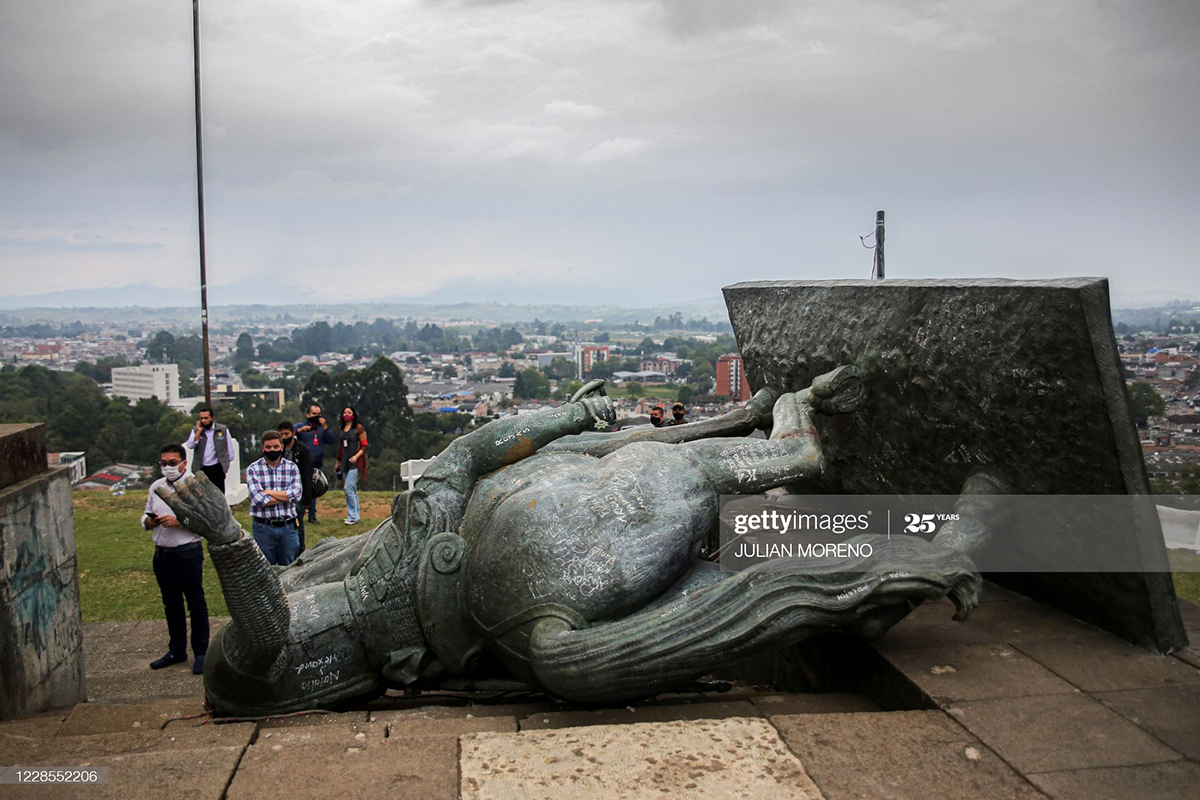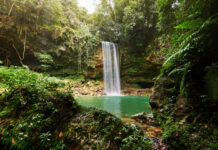
By Anastasia Moloney
BOGOTA, Colombia, Fri. Sept 18, 2020 (Thomson Reuters Foundation) – The toppling of a statue of a Spanish conqueror by indigenous people in Colombia this week has opened up debate over how the historic arrival and rule by Western Europeans and the suffering of native people should be remembered.
Members of the Misak indigenous tribe, taking a cue from protestors in the United States and elsewhere, tore down the equestrian statue of 16th-century conquistador Sebastian de Belalcazar in the southwestern city of Popayan.
It marked the first time indigenous people in the South American country have publicly dismantled such a statue, and Colombians in favor took to social media to call it “indigenous resistance,” an “emancipating act” and an “act of liberation.”
Around the world, statues linked to colonialism and slavery have been brought down or defaced in the months of anti-racism protests since George Floyd, a Black man, died in U.S. police custody in May.
For most native people in Latin America and the Caribbean, the 15th-century Spanish arrival brought pillage, slavery and rape, said Maria Violet Medina, a human rights leader from Colombia’s Nasa indigenous tribe.
“The conquerors brought illness, both physical and spiritual, to indigenous people. It was a genocide,” Medina told the Thomson Reuters Foundation in an interview.
“That history isn’t told,” she said. “The statue of Belalcazar represents pain, revictimization and causes resentment.”
Although police stood by as the protestors took down the statue, Popayan Mayor Juan Carlos Lopez on local radio called the incident an act of violence and vowed to restore the figure.
Colombia’s culture minister, Carmen Vasquez, also condemned the incident as a “violent act” and said monuments were part of a cultural heritage to be protected and conserved.
“Public monuments are an open museum, which belong to the whole community and are works of art to which we all have free access,” she said in a video posted on Twitter.
Colombia and other countries in Latin America that were conquered by Spanish forces are filled with statues of conquistadors, typically armed and astride a horse overlooking a town square or park.
Mercedes Tunubala, a member of the Misak people and the mayor of Silvia, a municipality about 36 miles northeast of Popayan, said knocking down the statue was a call by indigenous people for their voices and history to be heard.
“We have only learnt about one kind of history, through people like Belalcazar, and not the real history,” Tunubala said.
“We need to come together to decide how to commemorate that part of history, our indigenous history,” she said.
In the United States, protesters and officials as well have taken down statues honoring historical figures linked to slave ownership or to racist views, while in the British port of Bristol a statue of a slave trader was thrown into the harbor in June.
(Reporting by Anastasia Moloney; Editing by Ellen Wulfhorst.)










